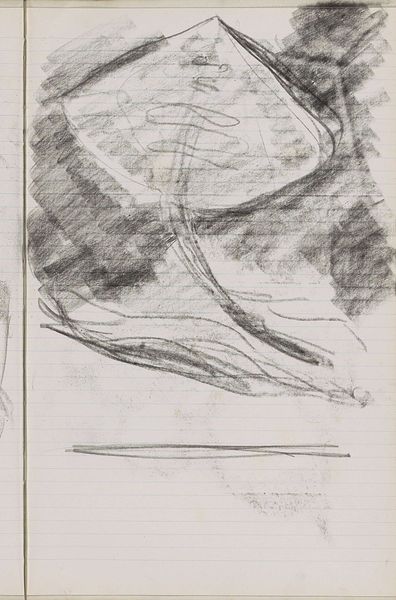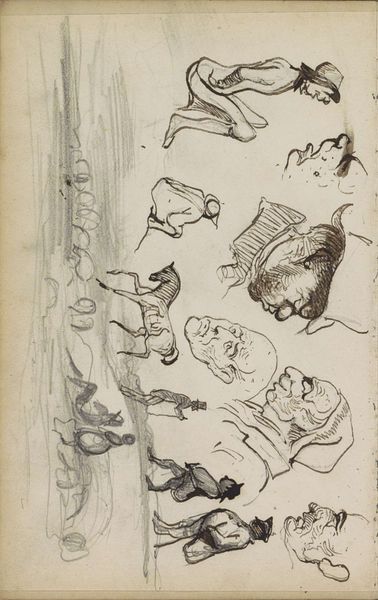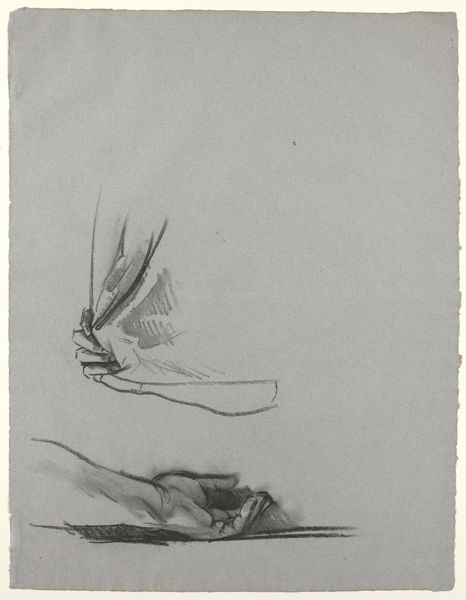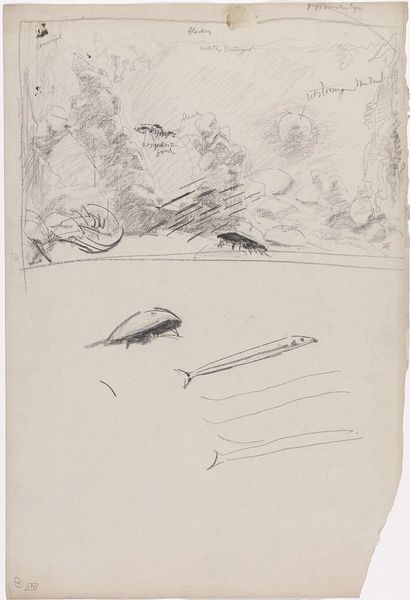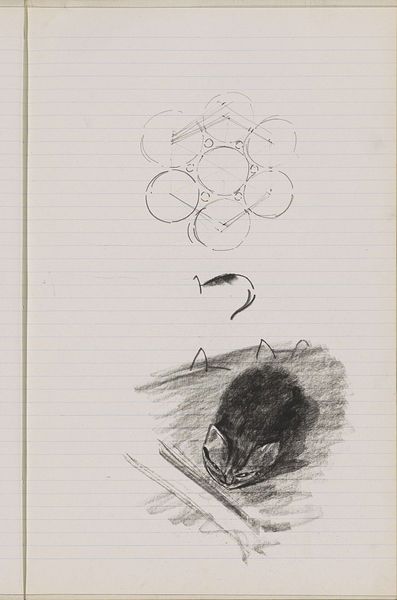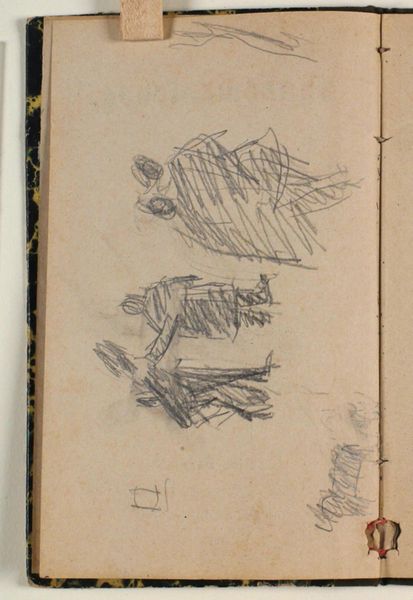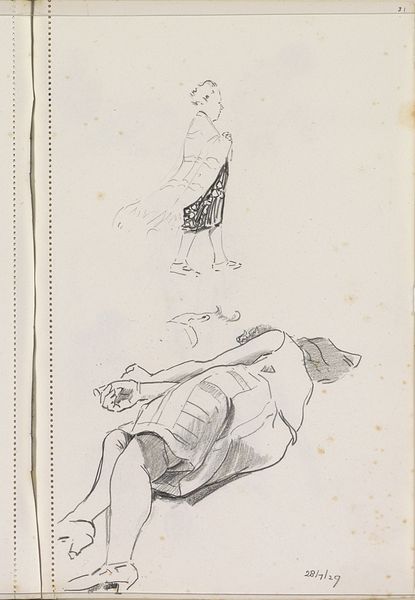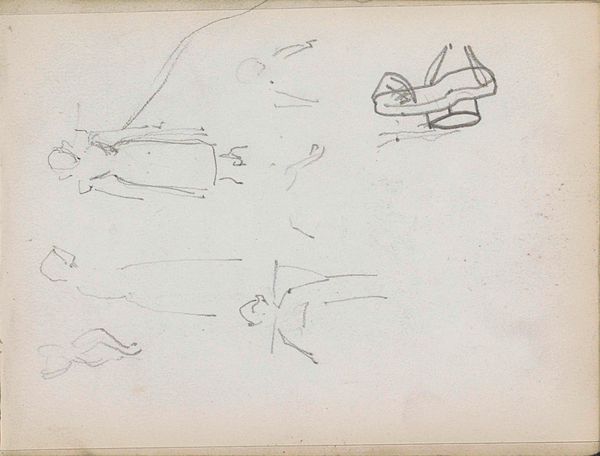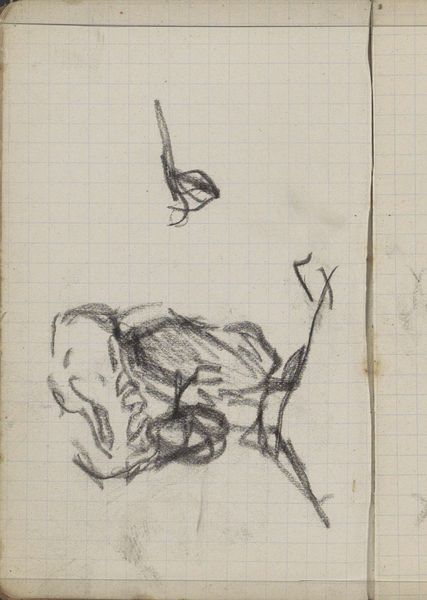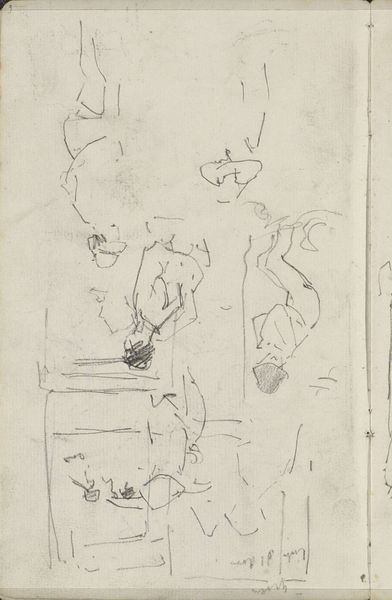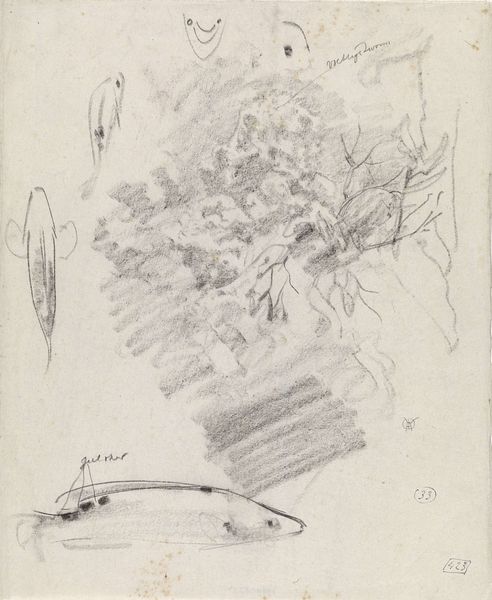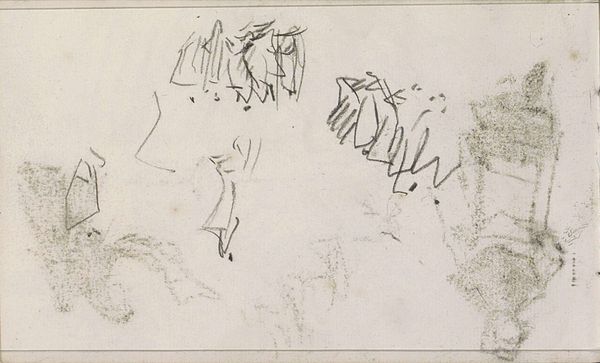
drawing, paper, pencil
#
portrait
#
drawing
#
amateur sketch
#
light pencil work
#
pencil sketch
#
paper
#
personal sketchbook
#
idea generation sketch
#
sketchwork
#
pen-ink sketch
#
pencil
#
line
#
sketchbook drawing
#
sketchbook art
#
realism
#
initial sketch
Copyright: Rijks Museum: Open Domain
Editor: So this is Gerrit Willem Dijsselhof's "Koppen, ogen en een poot van een kat," a pencil drawing from around 1901. It's just a sketch, really, but I'm drawn to the different styles used for each cat depiction. What strikes you about it? Curator: The informal nature is revealing, isn't it? We see the artist grappling with representation, trying out different angles and levels of detail. What's particularly interesting to me is the cat as a recurring motif in late 19th and early 20th-century art. Do you see the drawing in relationship with the growing industrialisation and the anxieties it raised? Editor: I hadn't considered that. Anxieties about industrialisation reflected through a pet cat? How so? Curator: The domestic sphere, represented by the cat, becomes increasingly important as a space of comfort and control amidst the chaos of modern life. Artists used images of cats to express sentiments and anxieties related to societal shifts. But what kind of role might museums play in constructing our perception of art history? Editor: Oh, right. By choosing to preserve and display a sketch like this, aren't we elevating its importance and maybe projecting meanings onto it that weren't originally intended? It was maybe just doodles... Curator: Exactly! And understanding those curatorial choices helps us to be more aware and critical about art's presentation within broader socio-political structures, particularly during the burgeoning Art Nouveau period in Europe. Editor: I see. So it's not just about the cat itself, but about how this image participates in a much bigger story. I'll look at sketches in museums with very different eyes now!
Comments
No comments
Be the first to comment and join the conversation on the ultimate creative platform.
